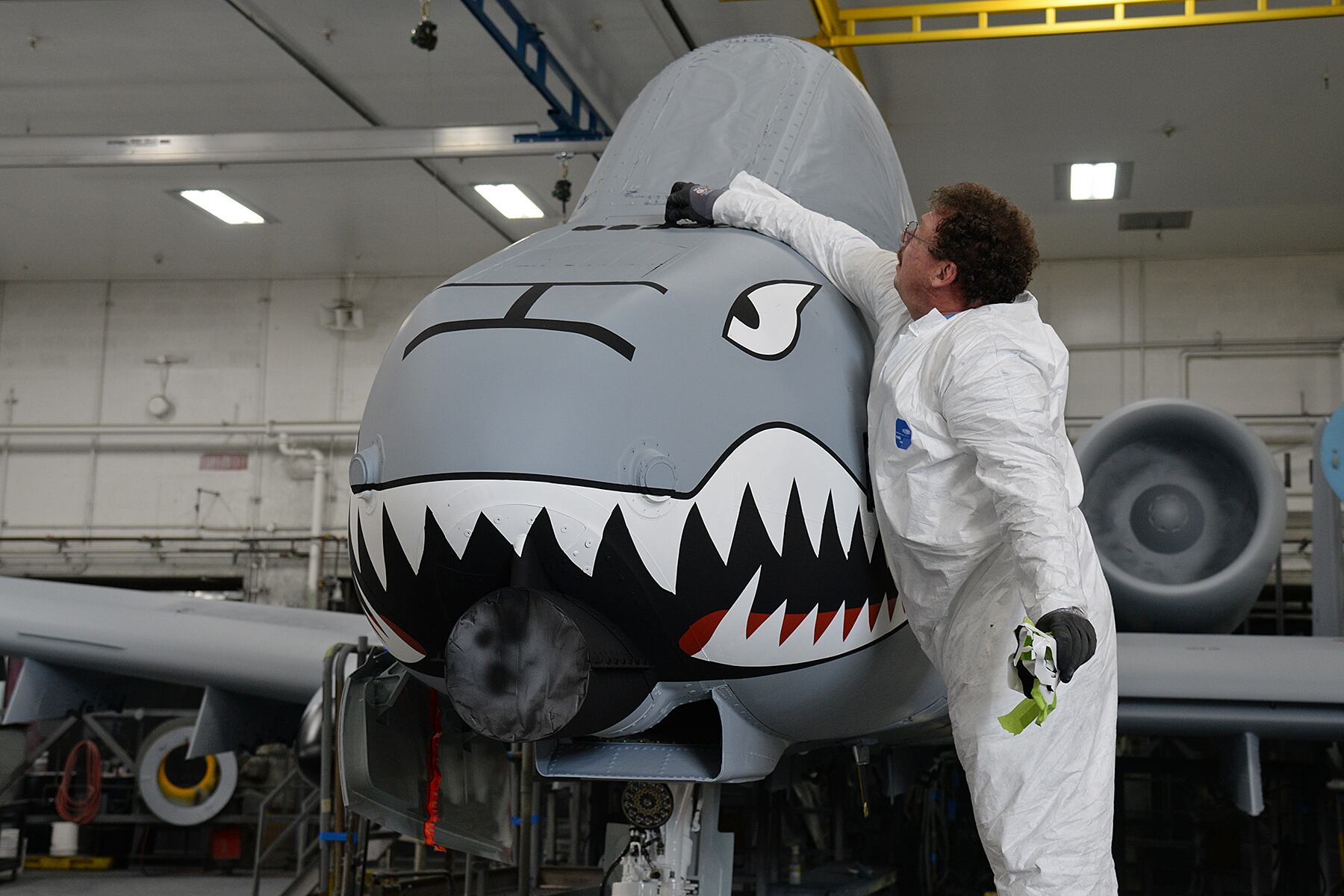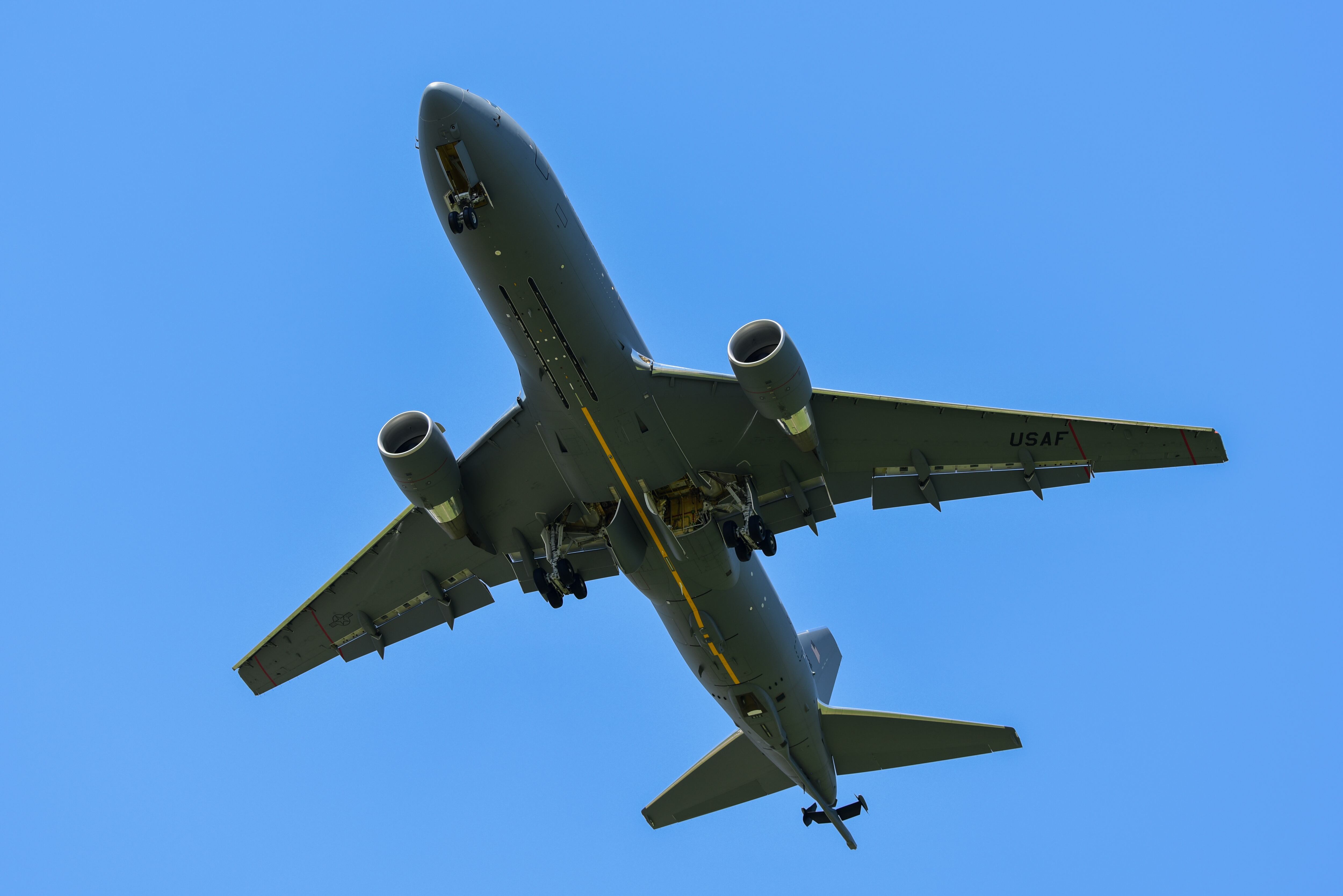WASHINGTON — For the past several months, Air Force leaders have hyped the fiscal year 2021 budget as a pivotal one, where the service would be forced to make near-term and possibly contentious sacrifices to its existing posture in order to ramp up investments in technologies needed to counter Russia and China.
But the budget request the Air Force released on Feb. 10 seems a compromise between the service’s more radical force planning organizations in the Pentagon and the combatant commanders around the world, who fought back against making major cuts that could greatly impact readiness.
On the whole, the Air Force states that it will realign $4.1 billion in spending over the next five years, divesting some of its oldest aircraft and putting the savings toward future technologies like joint all domain command and control. In FY 21, it will begin retiring a portion of its B-1 bombers, A-10 Warthog attack planes, RQ-4 Global Hawk surveillance drones, KC-135 and KC-10 tankers and C-130H planes.
Click here for more FY21 budget coverage.
However, the service’s budget plan is less ambitious than it has telegraphed over the past six months, with the Air Force ultimately deciding against divesting entire aircraft inventories, making no cuts or cancellations to major ongoing procurement programs, and ultimately keeping research and development funding stable.
“We didn’t get everything we put on the table. Some was walked back,” Air Force Chief of Staff Gen. David Goldfein said of the budget in January. “But we got a lot of what we put on the table.”
What got cut
The Air Force is retiring 17 of its oldest B-1s, which officials say are straining the fleet as maintainers exhaust themselves trying to keep the airframes ready to fly.
“We flew the B-1s very hard in the [U.S. Central Command area of responsibility], and that’s what’s caused some of the challenge they’ve run into. So part of the discussion here is do you put a bunch of money in to preserve that at the expense of some other things you’re going to be able to do to give you other capability?” Pacific Air Forces commander Gen. Charles Brown told Defense News at Singapore Airshow on Feb. 10.
Although the service plans to operate the majority of its A-10 Warthog fleet until 2030, it has opted not to rewing a portion of the fleet — 44 aircraft, or about three squadrons worth of aircraft. That will bring the total A-10 inventory to 237 planes.
RELATED

The service is also cutting its Global Hawk Block 20 and 30 surveillance drones — a total of 24 aircraft — leaving its RQ-4 Block 40s around to conduct the high-altitude surveillance mission alongside the venerable U-2 spyplane.
Because some of the Block 20 Global Hawks host the Battlefield Airborne Communications Node that serves as a communications relay across platforms that are not interoperable, the service will buy five new E-11A aircraft integrated with the BACN systems to replace the outgoing EQ-4Bs, an Air Force spokesperson said. The Air Force plans to buy the E-11s at a rate of one per year starting in FY21.
While the Air Force is retaining the entirety of its MQ-9 Reaper fleet, it plans to reduce the number of combat air patrols from 70 to 60 in FY21, saving money by cutting 10 CAPs that were contractor-operated. Sources tell Defense News that this was one of the most hotly contested items under debate, with combatant commanders opposing other elements in the Air Force that sought wider MQ-9 divestiture.
The mobility fleet is also losing aircraft in FY21, with the Air Force requesting the retirement of 13 KC-135s and 16 KC-10s as the new KC-46 comes online. The service will also retire 24 C-130Hs, which will be replaced by 19 C-130Js that will be delivered that fiscal year.
What got funded
The Department of the Air Force’s FY21 budget is split in three major parts: $153.6 billion for the Air Force, $15.4 billion for the Space Force, and $38.2 billion for “non-blue” expenses that pass through the Air Force budget but typically pay for classified space projects.
Spending stayed roughly stable across FY20 and FY21 for both the procurement and research, development, test and evaluation (RDT&E) accounts — which sit at $22.9 billion and $26.9 billion in FY21, respectively — with a few major programs getting modest boosts or reductions in spending.
Funding for the Air Force’s next generation intercontinental ballistic missile, Ground Based Strategic Deterrent set to be manufactured by Northrop Grumman, tripled in FY21 with a $1.5 billion request. That money will fund “activities to deliver a flexible integrated weapon system critical design,” according to budget materials.
It also increased money for one of its biggest priorities, the Advanced Battle Management System, from $144 million to $302 million. That money is currently being used to fund ongoing exercises meant to develop and test technologies that can help network assets that are currently inoperable.
Meanwhile, hypersonics prototyping fell from $576 million in FY20 to $382 million, and funding for the Long Range Standoff Weapon decreased from $713 million to $474 million.
The service maintained funding for the B-21 bomber, Air Force One replacement, T-7A trainer, and Next Generation Air Dominance fighter programs at about the same levels as FY20. In FY21, the Air Force requested $2.8 billion for the B-21, $801 million for Air Force One, $249 million for T-7 and $1 billion for NGAD.
The Air Force will keep F-35A procurement stable, buying 48 jets at about $5.8 billion. Despite ongoing problems with the KC-46’s camera system, the service will continue buying planes at a rate of 15 per year, spending $3.1 billion in FY21. It will also purchase another 12 F-15EX planes for $1.4 billion.
RELATED

To recapitalize its rotary wing fleet, the Air Force will buy 19 HH-60W combat search and rescue helicopters for $1.2 billion, and it will also buy the first eight low rate initial production MH-139 Grey Wolf helicopters for $212 million.
In addition, Air Force Special Operations Command will get another four MC-130J aircraft.
Valerie Insinna is Defense News' air warfare reporter. She previously worked the Navy/congressional beats for Defense Daily, which followed almost three years as a staff writer for National Defense Magazine. Prior to that, she worked as an editorial assistant for the Tokyo Shimbun’s Washington bureau.





